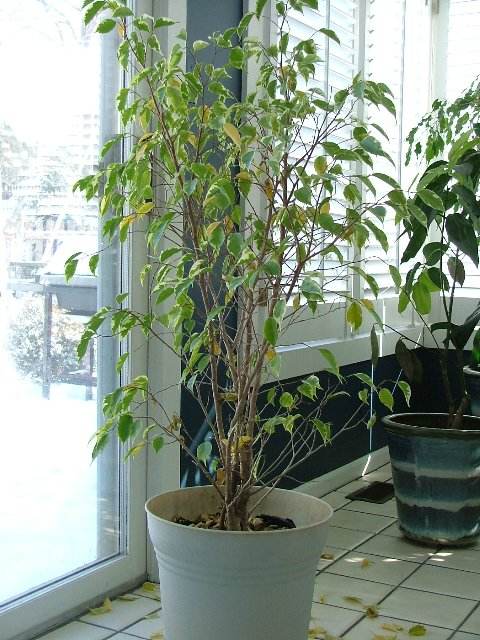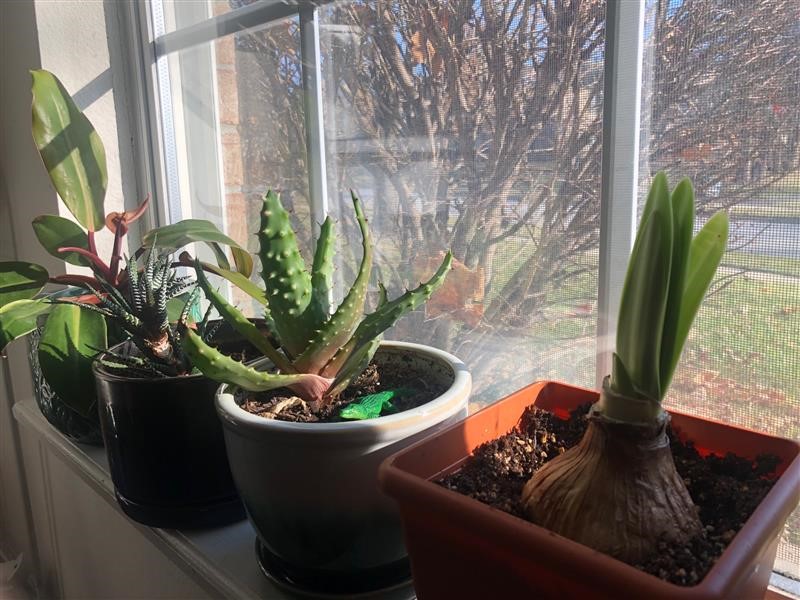Winter is Hard on Houseplants
One would think houseplants in our homes would not suffer through the drab days of winter with warm temperatures. Unfortunately, winter is a stressful time for houseplants that should bring life to a room. Often winter conditions leave the plants looking sickly and perhaps shedding leaves.
The short days and low light levels during winter are the primary causes of houseplant problems. The light deficit creates stress, which the plants respond to by slowing down or stopping growth. This is seen by yellowing leaves or, in many cases, excessive leaf drop.
Often in our zeal to make the plants healthy, we supply additional food and water. Providing these extras actually creates more problems than they solve. When growth slows, excess water and nutrients can lead to over-watering or surplus nutrients, which weaken the plant by damaging the root system.
The winter months are a time to reduce watering as the slowed growth leads to less uptake. Fertilizers just stay in the soil where these nutrients can build up and burn the roots by creating salts. For this reason, it is not recommended to fertilize houseplants from fall through early spring.
The best thing to do for ailing houseplants during the winter is to increase the light levels however possible. This could mean moving them to a sunnier window or providing a light source. If artificial light is used, there are some guidelines.
Artificial light is only beneficial if the light source is close to the plant within a foot or so, and left on for at least fourteen to sixteen hours. A lamp a few feet away or an overhead light will provide no advantage. Artificial light is not practical for most people.
As better light returns in the spring, plants will start to collect more energy and grow. Fertilization is beneficial at that time. Plants that have dropped leaves may need to be pruned back to reduce legginess and promote new vigorous growth.
 It is not just the shorter days that influence the plant’s growth but also the quality of light. The sun’s winter orbit is closer to the horizon, and this limits the spectrum of light that gets through. We can’t catch a break, can we?
It is not just the shorter days that influence the plant’s growth but also the quality of light. The sun’s winter orbit is closer to the horizon, and this limits the spectrum of light that gets through. We can’t catch a break, can we?
One last word of caution; don’t be tempted to boot the plants outside on warm winter days or early in the spring. Houseplants are tropical, so temperatures below fifty-five can cause a chill, leading to more leaf drop. Come spring, all the plants will benefit from longer days and warmer temperatures. The same could be said for most of us as well.
Return to Houseplant Agent Articles

Have questions? The Garden Hotline is staffed by trained EMG volunteers and Extension staff who will assist you with questions.
Phone: (913) 715-7050
Email: garden.help@jocogov.org